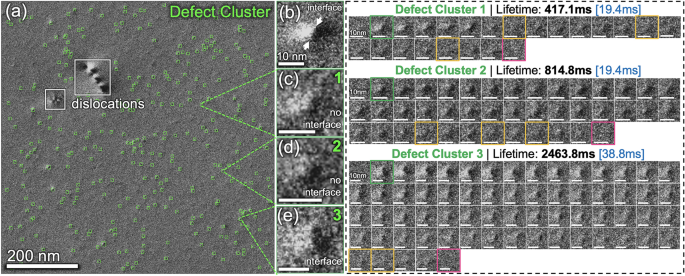2023-02-16 ヘルマン・フォン・ヘルムホルツ協会(HGF)
◆エネルギー分野だけでなく、産業分野においても、化石燃料からの脱却が急務となっている。炭化水素などの原料化学物質は、原理的には、再生可能エネルギーと水や二酸化炭素などの豊富な分子を用いて、電極触媒活性物質の助けを借りて生産することができます。しかし、現在のところ、これらの触媒材料は高価で希少な材料で構成されているか、効率が悪いかのどちらかです。
◆Prashanth W. Menezes博士(HZB/TU-Berlin)率いる研究チームは、このたび、アノード酸素発生反応(OER)の最も活性な触媒の化学的性質を解明した。OERは、水分解における水素発生反応(HER)に電子を供給する重要な反応である。水素はその後、炭化水素などのさらなる化合物に処理することができる。また、二酸化炭素を直接電極触媒でアルコール類や炭化水素に還元する際にも、酸素発生装置は中心的な役割を果たす。
◆酸素発生反応の電極触媒として有望なのは、コバルト-鉄系オキシ水酸化物である。研究者らは、BESSY IIで一連のLiFe1-xCoxボロホスフェートをさまざまな分光法で分析し、異なる配置の鉄(Fe)元素の酸化状態を決定した。
<関連情報>
- https://www.helmholtz-berlin.de/pubbin/news_seite?nid=24627&sprache=en&seitenid=1
- https://onlinelibrary.wiley.com/doi/10.1002/aenm.202203886
酸素発生反応により再構成されたコバルト-鉄オキシ水酸化物中の酸化状態≧IVの鉄のその場観察 In Situ Detection of Iron in Oxidation States ≥ IV in Cobalt-Iron Oxyhydroxide Reconstructed during Oxygen Evolution Reaction
Lukas Reith, Jan Niklas Hausmann, Stefan Mebs, Indranil Mondal, Holger Dau, Matthias Driess, Prashanth W. Menezes
Advanced Energy Materials Published: 02 February 2023
DOI:https://doi.org/10.1002/aenm.202203886

Abstract
Cobalt-iron oxyhydroxides (CoFeOOHx) are among the most active catalysts for the oxygen evolution reaction (OER). However, their redox behavior and the electronic and chemical structure of their active sites are still ambiguous. To shed more light on this, the complete and rapid reconstruction of four helical cobalt-iron borophosphates with different Co:Fe ratios into disordered cobalt-iron oxyhydroxides can be achieved, which are electrolyte-penetrable and thus most transition metal sites can potentially participate in the OER. To track the redox behavior and to identify the active structure, quasi in situ X-ray absorption spectroscopy is applied. Iron in high oxidation states ≥ IV (Fe4+) and its substantial redox behavior with an average oxidation state of around 2.8 to above 3.2 is detected. Furthermore, a 6% contraction of the Fe-O bond length compared to Fe3+OOH references is observed during OER and a strong distortion of the [MO6] octahedra is identified. It is hypothesized that this bond contraction is caused by the presence of oxyl radicals and that di-µ-oxyl radical bridged cobalt-iron centers are the active sites. It is anticipated that the detailed electronic and structural description can substantially contribute to the debate on the nature of the active site in bimetallic iron-containing OER catalysts.




